
Malapascua Island: A Hidden Paradise in the Philippines
Discover Malapascua Island: Dive with thresher sharks, explore vibrant coral reefs, and relax on pristine beaches in this hidden paradise in the Philippines.
Malapascua Island is an idyllic gem located in the Philippines. Known for its crystal-clear waters, pristine white sands, and vibrant marine life, this island is a haven for divers and beach lovers alike. The small island, only about 2.5 kilometers long, offers a peaceful retreat from the hustle and bustle of city life. One of the island's main attractions is the chance to see thresher sharks. Monad Shoal is a famous dive site where divers can observe these magnificent creatures in their natural habitat. Besides sharks, the waters around Malapascua are teeming with colorful coral reefs and diverse marine species, making it a top destination for underwater photography. Apart from diving, visitors can explore the island's charming villages. The local community is warm and welcoming, offering a glimpse into traditional Filipino life. You can also enjoy other activities such as snorkeling, island hopping, or simply relaxing on the beach with a good book. Whether you are an adventure seeker or someone looking to unwind, Malapascua Island promises a memorable experience.
Local tips in Malapascua Island
- Best time to visit is between November and June for optimal weather and diving conditions.
- Cash is king on the island; there are no ATMs, so bring enough money for your stay.
- Pack reef-safe sunscreen to protect the marine environment.
- Consider bringing your own snorkeling gear for convenience.
- Book diving tours in advance, especially during peak season.
- Respect local customs and traditions to ensure a pleasant interaction with the community.
Malapascua Island: A Hidden Paradise in the Philippines
Malapascua Island is an idyllic gem located in the Philippines. Known for its crystal-clear waters, pristine white sands, and vibrant marine life, this island is a haven for divers and beach lovers alike. The small island, only about 2.5 kilometers long, offers a peaceful retreat from the hustle and bustle of city life. One of the island's main attractions is the chance to see thresher sharks. Monad Shoal is a famous dive site where divers can observe these magnificent creatures in their natural habitat. Besides sharks, the waters around Malapascua are teeming with colorful coral reefs and diverse marine species, making it a top destination for underwater photography. Apart from diving, visitors can explore the island's charming villages. The local community is warm and welcoming, offering a glimpse into traditional Filipino life. You can also enjoy other activities such as snorkeling, island hopping, or simply relaxing on the beach with a good book. Whether you are an adventure seeker or someone looking to unwind, Malapascua Island promises a memorable experience.
When is the best time to go to Malapascua Island?
Iconic landmarks you can’t miss
Kalanggaman Island
Discover Kalanggaman Island, a tropical paradise in the Philippines with pristine white sands, crystal-clear waters, and unforgettable sunsets.

Tepanee Beach Resort
Discover serenity at Tepanee Beach Resort in Malapascua, where stunning ocean views and exceptional service create the ultimate tropical getaway.

Angelina beach resort & italian restaurant
Discover the charm of Angelina Beach Resort & Italian Restaurant on Malapascua Island, where Italian cuisine meets tropical paradise.

Ocean Vida Beach & Dive Resort
Explore paradise at Ocean Vida Beach & Dive Resort, where exceptional diving meets serene beachfront relaxation on Malapascua Island.

Evolution Beach and Dive Resort
Discover the beauty of Malapascua at Evolution Beach and Dive Resort, where adventure meets relaxation in a tropical paradise.

Slam's Garden Dive Resort / Ocean Passion
Experience the beauty of Malapascua Island at Slam's Garden Dive Resort, a haven for divers and relaxation seekers alike.

Devocean Divers Malapascua
Experience the thrill of diving at Devocean Divers Malapascua, where adventure meets breathtaking marine life in the Philippines' top dive destination.

Kokay's Maldito Dive Resort
Discover Kokay's Maldito Dive Resort, where adventure meets serenity in the heart of Malapascua's breathtaking underwater world.

Little Mermaid Dive Resort
Discover the aquatic paradise of Little Mermaid Dive Resort on Malapascua Island, where adventure meets relaxation in a stunning beachfront setting.
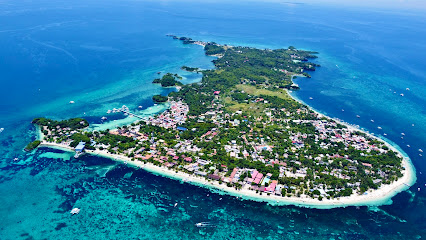
Malapascua Legend Water Sports & Dive Resort
Discover the perfect blend of relaxation and adventure at Malapascua Legend Water Sports & Dive Resort on the enchanting Malapascua Island.

Atlas Divers Malapascua
Experience the underwater wonders of Malapascua Island with Atlas Divers, where adventure meets expert guidance in scuba diving.

Langob Beach Heaven
Experience the serene beauty and adventure of Langob Beach Heaven on Malapascua Island, a tropical paradise perfect for relaxation and exploration.

Malapascua Budget Inn
Experience affordable comfort at Malapascua Budget Inn, your gateway to the stunning beaches and vibrant marine life of Malapascua Island.

Blanco Beach Resort
Discover the ultimate beachfront escape at Blanco Beach Resort, where luxury meets adventure on Malapascua Island.

Cocobana Beach Resort
Experience the beauty of Malapascua Island at Cocobana Beach Resort, where relaxation meets adventure in a tropical paradise.

Unmissable attractions to see
Omagieca Obo-ob Mangrove Garden
Explore the breathtaking Omagieca Obo-ob Mangrove Garden in Bantayan, Cebu, a serene nature preserve for relaxation and discovery.

Kota Park
Explore the historical beauty and coastal charm of Kota Park in Madridejos, Cebu—a serene fortress steeped in rich Filipino heritage.

Malapascua Exotic Island Dive Resort
Explore the enchanting Malapascua Exotic Island Dive Resort in Cebu, a diver's paradise with breathtaking beaches and vibrant marine life.

SK Divers Center
Discover the underwater wonders of Malapascua at SK Divers Center, a premier diving spot in Cebu, famed for its vibrant marine life and expert-led adventures.
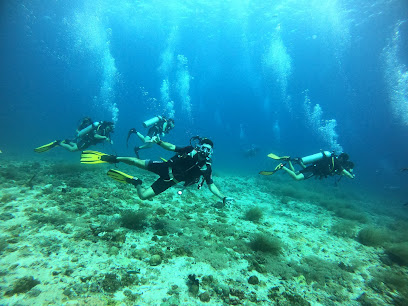
Malapascua Legend Water Sports & Dive Resort
Experience the ultimate tropical escape at Malapascua Legend Water Sports & Dive Resort, where adventure meets relaxation on stunning Malapascua Island.

Langob Beach Heaven
Experience the breathtaking beauty of Langob Beach Heaven, a tropical paradise on Malapascua Island, perfect for relaxation and adventure.

Malapascua Beach & Dive Resort
Experience the enchanting beauty of Malapascua Beach & Dive Resort, where serenity meets adventure in the heart of Cebu, Philippines.

Kinatarkan Island
Explore Kinatarkan Island in Santa Fe, a tropical paradise with stunning beaches, vibrant marine life, and unforgettable adventures in nature.

Daño Beach Resort
Experience the serene beauty of Daño Beach Resort in Daanbantayan, Cebu, where relaxation meets adventure on pristine beachfront.

Logon Beach
Experience the breathtaking beauty of Logon Beach in Malapascua, Cebu, where crystal-clear waters meet vibrant marine life and stunning sunsets.

Guimbitayan
Discover the pristine beauty and vibrant marine life of Guimbitayan, a tropical paradise in Malapascua, Cebu, perfect for relaxation and adventure.
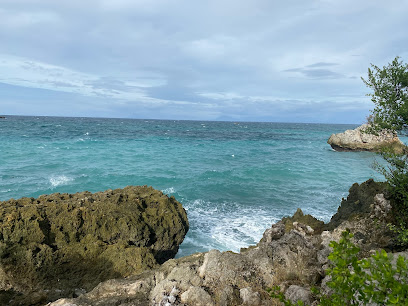
Gugma Beach
Discover the enchanting beauty of Gugma Beach in Daanbantayan, Cebu, where pristine sands and crystal-clear waters create a tropical paradise.

Malapascua Quillano-2 dive site
Experience the thrill of diving with thresher sharks at Malapascua Quillano-2 Dive Site, a premier destination for underwater exploration in the Philippines.

Langub Beach
Langub Beach in Daanbantayan, Cebu, offers a serene escape with pristine sands, sparkling waters, and breathtaking sunsets - a must-visit paradise for tourists.

North Beach Malapascua
Experience the untouched beauty of North Beach Malapascua, where pristine sands and vibrant marine life create a tropical paradise for every traveler.

Essential places to dine
Tepanee Beach Resort
Discover paradise at Tepanee Beach Resort on Malapascua Island - where luxury meets nature's beauty.

Angelina beach resort & italian restaurant
Experience exquisite Italian cuisine amidst tropical paradise at Angelina Beach Resort & Italian Restaurant on Malapascua Island.
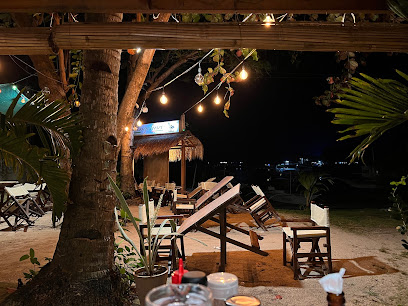
Hippocampus Beach Resort
Experience the perfect getaway at Hippocampus Beach Resort with beachfront dining, vibrant nightlife, and unforgettable island adventures in Cebu.

Ocean Vida Beach & Dive Resort
Discover tropical bliss at Ocean Vida Beach & Dive Resort on Malapascua Island - your ultimate getaway for relaxation and underwater adventures.

Kokay's Maldito Dive Resort
Experience paradise at Kokay's Maldito Dive Resort - your ultimate diving destination in Malapascua, Cebu with stunning views and delicious cuisine.

VillaPotenciana Restaurant
Experience exquisite vegan dining at VillaPotenciana Restaurant on Bounty Beachfront – where fresh ingredients meet stunning ocean views.

Amihan Restaurant Malapascua
Discover culinary bliss at Amihan Restaurant on Malapascua Island—where fresh seafood meets delicious pizza in an idyllic setting.
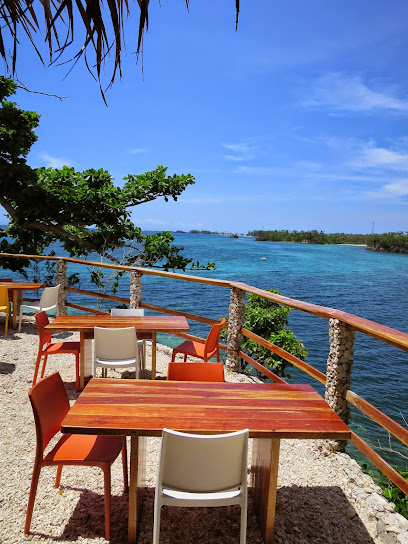
Bakhaw Kiwi
Experience authentic Filipino cuisine at Bakhaw Kiwi in Daanbantayan – where every meal is a celebration of flavor.

Malapascua Legend Water Sports & Dive Resort
Discover the ultimate blend of adventure and relaxation at Malapascua Legend Water Sports & Dive Resort on beautiful Malapascua Island.

Bebot's
Experience delightful breakfasts at Bebot's in Malapascua – where every meal is a taste of paradise!

Avrill's Malapascua Island
Experience authentic Filipino cuisine and fresh seafood at Avrill's Malapascua Island, where every meal is a celebration of flavor.

Malapascua Island Public Market
Experience authentic Filipino cuisine at Malapascua Island Public Market - where local flavors meet vibrant island life.

Mabuhay Restaurant
Discover authentic Filipino cuisine at Mabuhay Restaurant in Daanbantayan - where every dish tells a story.

Georgia's Neverland HostelBar& Restaurant
Experience comfort and vibrant vegan cuisine at Georgia's Neverland HostelBar & Restaurant on Malapascua Island.

Mike and Diose´s Beachcottage, AABANA Beach&Watersport Resort
Discover tranquility and adventure at Mike and Diosé's Beachcottage on Malapascua Island - where stunning views meet exceptional hospitality.

Markets, malls and hidden boutiques
Devocean Divers Malapascua
Experience the best diving in Malapascua with Devocean Divers, where adventure meets the stunning beauty of the underwater world.

French Kiss Divers Malapascua
Discover the underwater marvels of Malapascua with French Kiss Divers, where adventure and expertise meet in a diver's paradise.

Fun & Sun Dive & Travel
Explore the vibrant marine life and stunning underwater landscapes at Fun & Sun Dive & Travel in Daanbantayan, Cebu.

My Tablea Cafe
Discover My Tablea Cafe: A cozy beachfront retreat on Malapascua Island offering delightful local coffees and scrumptious treats amidst stunning ocean views.
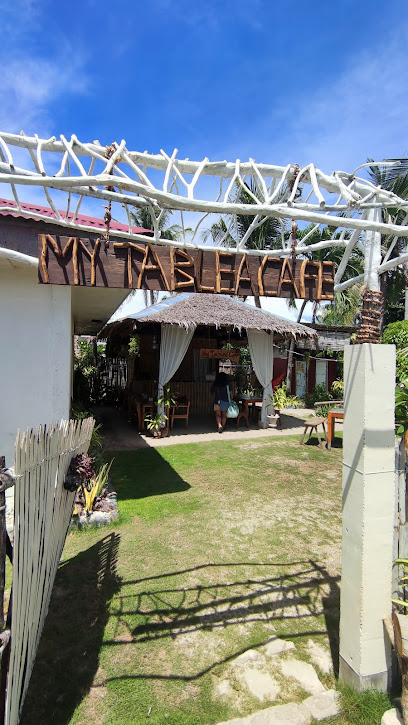
Mabuhay Thresher Dive Center
Discover the mesmerizing underwater world at Mabuhay Thresher Dive Center, your gateway to thrilling diving adventures in Malapascua, Philippines.

Sea Explorers Malapascua
Explore the underwater paradise of Malapascua at Sea Explorers, where adventure meets stunning marine biodiversity.

Fish Buddies Dive Shop
Explore the vibrant marine life of Malapascua at Fish Buddies Dive Shop, your top diving destination in Cebu, Philippines.

MTD DIVE SHOP
Dive into the breathtaking underwater world with MTD Dive Shop on Malapascua Island, where adventure meets beauty in the heart of the Philippines.

Malapascua MBI Dive Center
Discover the underwater wonders of Malapascua at MBI Dive Center, where every dive unveils the beauty of marine life in the Philippines.

Dive Nation Malapascua
Explore the underwater wonders of Malapascua with Dive Nation, known for its stunning dive sites and exceptional marine life encounters.

The Sunset Shack X Kizu Sumi Tattoo
Discover organic delights and artistic expressions at The Sunset Shack X Kizu Sumi Tattoo on beautiful Malapascua Island, Cebu.

Emerald Green Diving Center Malapascua
Experience the vibrant underwater world at Emerald Green Diving Center Malapascua, where adventure meets exceptional diving services.

Evolution Recreational and Technical Diving
Discover the underwater wonders of Malapascua Island at Evolution Recreational and Technical Diving, your premier diving destination in Cebu.

Malapascua Marketplace
Explore the heart of local culture at Malapascua Marketplace, a vibrant hub filled with fresh produce, delicious street food, and unique handmade crafts.

Lindy’s Store
Lindy's Store in Malapascua: Your essential stop for convenience, local snacks, and beach necessities in Cebu.

Essential bars & hidden hideouts
Kokay's Maldito Dive Resort
Experience the beauty of Malapascua at Kokay's Maldito Dive Resort, where adventure meets relaxation in a tropical paradise.

Amihan Restaurant Malapascua
Experience the best of Malapascua Island at Amihan Restaurant, where fresh seafood meets delicious pizzas amidst breathtaking island views.

Bakhaw Kiwi
Experience the rich flavors of Filipino cuisine at Bakhaw Kiwi in Daanbantayan, Cebu - a culinary gem not to be missed.

Avila’s Horizon Dive Resort
Experience the ultimate diving adventure and relaxation at Avila’s Horizon Dive Resort, your gateway to the stunning underwater world of Malapascua Island.

Oscar's Bar and Restaurant
Experience Malapascua Island's culinary delights at Oscar's Bar and Restaurant, where great food and stunning ocean views come together.

Craic House
Experience the flavors of the Philippines at Craic House, a beachfront restaurant on Bounty Beach, Malapascua, with stunning ocean views.

The Beach Hub
Discover the culinary delights at The Beach Hub, a beachfront restaurant in Malapascua offering fresh seafood, local flavors, and stunning ocean views.

Safety Stop Isla Bistro
Experience the unique flavors of Malapascua at Safety Stop Isla Bistro, a cozy bistro offering a delightful range of local and international dishes.

Shipwreck Beach Cafe
Experience the best of Malapascua Island at Shipwreck Beach Cafe, where fresh seafood meets breathtaking views in a tropical paradise.

Kokay’s Maldito Restaurant
Discover the flavors of Western cuisine at Kokay’s Maldito Restaurant, a delightful dining experience on Malapascua Island, Cebu.

Dory's Bar & Sugba
Experience the vibrant flavors and stunning coastal views at Dory's Bar & Sugba in Daanbantayan, Cebu, where seafood and hospitality meet.

Josephine's Grilled fish and Barbecue
Experience the best of Cebu's seafood at Josephine's Grilled Fish and Barbecue, where every dish is a celebration of local flavors.

Evolution Recreational and Technical Diving
Experience the underwater wonders of Malapascua Island at Evolution Recreational and Technical Diving, where adventure meets relaxation.

Malapascua Thresher Divers Restaurant
Discover the authentic taste of Cebu at Malapascua Thresher Divers Restaurant, where barbecue meets breathtaking island views.

Exotic Bar and Restaurant
Experience the flavors of the tropics at Exotic Bar and Restaurant, where stunning beachfront views meet delightful culinary creations.

Local Phrases about Malapascua Island
-
- HelloKumusta
[koo-moo-stah] - GoodbyePaalam
[pah-ah-lahm] - YesOo
[oh-oh] - NoHindi
[hin-dee] - Please/You're welcomePakiusap
[pah-kee-oo-sahp] - Thank youSalamat
[sah-lah-maht] - Excuse me/SorryPasensya
[pah-sen-syah] - How are you?Kamusta ka?
[kah-moo-stah kah] - Fine. And you?Mabuti. Ikaw?
[mah-boo-tee ee-kahw] - Do you speak English?Marunong ka ba mag-English?
[mah-roo-nohng kah bah mahg-ehng-glihsh] - I don't understandHindi ko maintindihan
[hin-dee koh mah-een-teen-dee-hahn]
- HelloKumusta
-
- I'd like to see the menu, pleaseGusto ko makakita ng menu, pakiusap
[goo-stoh koh mah-kah-kih-tah ng meh-noo pah-kee-oo-sahp] - I don't eat meatHindi ako kumakain ng karne
[hin-dee ah-koh koo-mah-kah-een ng kahr-neh] - Cheers!Tagay!
[tah-gai] - I would like to pay, pleaseGusto ko magbayad, pakiusap
[goo-stoh koh mahg-bah-yahd pah-kee-oo-sahp]
- I'd like to see the menu, pleaseGusto ko makakita ng menu, pakiusap
-
- Help!Tulong!
[too-lohng] - Go away!Lumayo ka!
[loo-mah-yoh kah] - Call the Police!Tawagin ang Pulis!
[tah-wah-geen ahng poo-lees] - Call a doctor!Tawagin ang doktor!
[tah-wah-geen ahng dohk-tohr] - I'm lostNaliligaw ako
[nah-lee-lee-gahw ah-koh] - I'm illMasama ang pakiramdam ko
[mah-sah-mah ahng pah-kee-rahm-dahm koh]
- Help!Tulong!
-
- I'd like to buy...Gusto ko bumili ng...
[goo-stoh koh boo-mee-lee ng] - I'm just lookingNagtitignan lang ako
[nahg-tee-teeg-nahn lahng ah-koh] - How much is it?Magkano ito?
[mahg-kah-noh ee-toh] - That's too expensiveMasyadong mahal
[mahs-yah-dohng mah-hahl] - Can you lower the price?Pwede bang babaan ang presyo?
[pweh-deh bahng bah-bah-ahn ahng preh-syoh]
- I'd like to buy...Gusto ko bumili ng...
-
- What time is it?Anong oras na?
[ah-nohng oh-rahs nah] - It's one o'clockAlas-una na
[ah-lahs-oo-nah nah] - Half past (10)Alas-diyes y medya
[ah-lahs-dee-yes ee med-yah] - MorningUmaga
[oo-mah-gah] - AfternoonHapon
[hah-pohn] - EveningGabi
[gah-bee] - YesterdayKahapon
[kah-hah-pohn] - TodayNgayon
[ngai-yohn] - TomorrowBukas
[boo-kahs] - 1Isa
[ee-sah] - 2Dalawa
[dah-lah-wah] - 3Tatlo
[taht-loh] - 4Apat
[ah-paht] - 5Lima
[lee-mah] - 6Anim
[ah-neem] - 7Pito
[pee-toh] - 8Walo
[wah-loh] - 9Siyam
[see-yahm] - 10Sampu
[sahm-poo]
- What time is it?Anong oras na?
-
- Where's a/the...?Nasaan ang...?
[nah-sahn ahng] - What's the address?Anong address?
[ah-nohng ah-drehs] - Can you show me (on the map)?Pwede mo ba akong ipakita (sa mapa)?
[pweh-deh moh bah ah-kohng ee-pah-kee-tah sah mah-pah] - When's the next (bus)?Kailan ang susunod na (bus)?
[kahy-lahn ahng soo-soo-nod nah] - A ticket (to ....)Isang tiket (papuntang ....)
[ee-sahng tee-keht pah-poon-tahng]
- Where's a/the...?Nasaan ang...?
History of Malapascua Island
-
Malapascua Island, part of the Visayan archipelago in the Philippines, was originally home to indigenous people who lived off the rich marine resources. Archaeological evidence suggests that the early inhabitants were skilled fishermen and traders who interacted with neighboring islands. Artifacts such as pottery and tools have been found, indicating a thriving pre-colonial culture.
-
During the 16th century, the Spanish colonization of the Philippines brought significant changes to Malapascua Island. The island was named 'Malapascua,' meaning 'Bad Easter,' by Spanish sailors who experienced a shipwreck on Easter Sunday. The Spaniards introduced Christianity, and the island became part of the parish of Logon. Many of the island's original customs were replaced by Spanish traditions and religious practices.
-
World War II had a profound impact on Malapascua Island. The Japanese forces occupied the island, using it as a strategic point for their operations. The local population suffered hardships, and many were forced into labor. The island was liberated by Allied forces in 1945, and remnants of this period, such as bunkers and tunnels, can still be found today.
-
After World War II, Malapascua Island underwent significant reconstruction. The local community worked hard to rebuild their homes and infrastructure. Fishing remained the primary livelihood, but the island slowly started to attract attention for its natural beauty. The construction of schools and basic healthcare facilities improved the quality of life for the residents.
-
In the late 20th century, Malapascua Island gained international fame for its stunning beaches and unique marine life, particularly the thresher sharks. Tourism became a major industry, with dive shops, resorts, and restaurants springing up across the island. Efforts to conserve the marine environment intensified, with the establishment of marine protected areas and sustainable tourism practices to preserve the island's natural resources.
-
Despite the influx of tourism, Malapascua Island has retained much of its cultural heritage. The local community celebrates various festivals, such as the Sinulog festival, which honors the Santo Niño (Holy Child). Traditional dances, music, and food are integral parts of these celebrations, offering visitors a glimpse into the island's rich cultural tapestry.
Malapascua Island Essentials
-
Malapascua Island is located off the northern coast of Cebu Island in the Philippines. The most common way to reach Malapascua is by flying into Mactan-Cebu International Airport in Cebu City. From there, take a taxi or a bus to the town of Maya, which is approximately a 4-hour drive. In Maya, you will find boats that ferry passengers to Malapascua Island. The boat ride typically takes around 30 minutes. It's advisable to check the boat schedules in advance, as they may vary depending on weather conditions.
-
Once on Malapascua Island, the primary modes of transportation are motorbikes and boats. Motorbikes can be hired to get around the island or to visit specific attractions. For exploring nearby dive sites and other islands, boats are readily available. Walking is also a feasible option, as the island is small and many areas are accessible on foot. There are no cars on the island, which adds to its tranquil atmosphere.
-
The official currency in the Philippines is the Philippine Peso (PHP). While some resorts and larger establishments on Malapascua Island may accept credit cards, it is advisable to carry cash for most transactions, especially in smaller shops and restaurants. ATMs are not available on the island, so make sure to withdraw sufficient cash before leaving Cebu City. Some businesses may accept US dollars, but this is not guaranteed.
-
Malapascua Island is generally considered safe for tourists. However, it is always prudent to take standard safety precautions. Avoid walking alone at night in unlit areas, and keep an eye on your belongings in crowded places. There are no specific high-crime areas targeting tourists, but it’s best to remain vigilant and aware of your surroundings. Petty theft can occur, so secure your valuables.
-
In case of emergency, dial 911 for immediate assistance. There is a small medical clinic on Malapascua Island for minor health issues, but for serious medical emergencies, you will need to be transported to a hospital in Cebu City. It is highly recommended to have travel insurance that covers medical emergencies. For minor ailments, there are pharmacies where over-the-counter medications can be purchased.
-
Fashion: Do dress modestly, especially when visiting local villages or religious sites. Avoid wearing overly revealing clothing. Religion: Do show respect for local customs and traditions. Public Transport: Do be courteous and respectful when using boats or motorbikes. Don't haggle aggressively. Greetings: Do greet locals with a friendly 'Mabuhay' or 'Hello'. A smile goes a long way. Eating & Drinking: Do try local dishes and accept food offerings graciously. Don't waste food, as it is considered disrespectful.
-
To experience Malapascua Island like a local, visit the local markets where you can purchase fresh seafood and produce. Engage with the locals, who are often very friendly and willing to share their culture and stories. Don’t miss the opportunity to try fresh coconut juice from a street vendor. For a unique experience, join a traditional fishing trip with local fishermen or participate in a community event. The island is famous for its dive sites, especially for thresher sharks, so don’t miss out on a diving adventure.
Trending Landmarks in Malapascua Island
-
Kalanggaman Island
-
Tepanee Beach Resort
-
Angelina beach resort & italian restaurant
-
Ocean Vida Beach & Dive Resort
-
Evolution Beach and Dive Resort
-
Slam's Garden Dive Resort / Ocean Passion
-
Devocean Divers Malapascua
-
Kokay's Maldito Dive Resort
-
Little Mermaid Dive Resort
-
Malapascua Legend Water Sports & Dive Resort
-
Atlas Divers Malapascua
-
Langob Beach Heaven
-
Malapascua Budget Inn
-
Blanco Beach Resort
-
Cocobana Beach Resort
Nearby Cities to Malapascua Island
-
Things To Do in Bohol
-
Things To Do in Legazpi
-
Things To Do in Boracay
-
Things To Do in Camiguin
-
Things To Do in Siargao
-
Things To Do in Cagayan de Oro
-
Things To Do in Tagaytay
-
Things To Do in Manila
-
Things To Do in Davao City
-
Things To Do in Zamboanga City
-
Things To Do in Angeles City
-
Things To Do in Subic
-
Things To Do in Puerto Princesa
-
Things To Do in Palawan
-
Things To Do in Baguio










